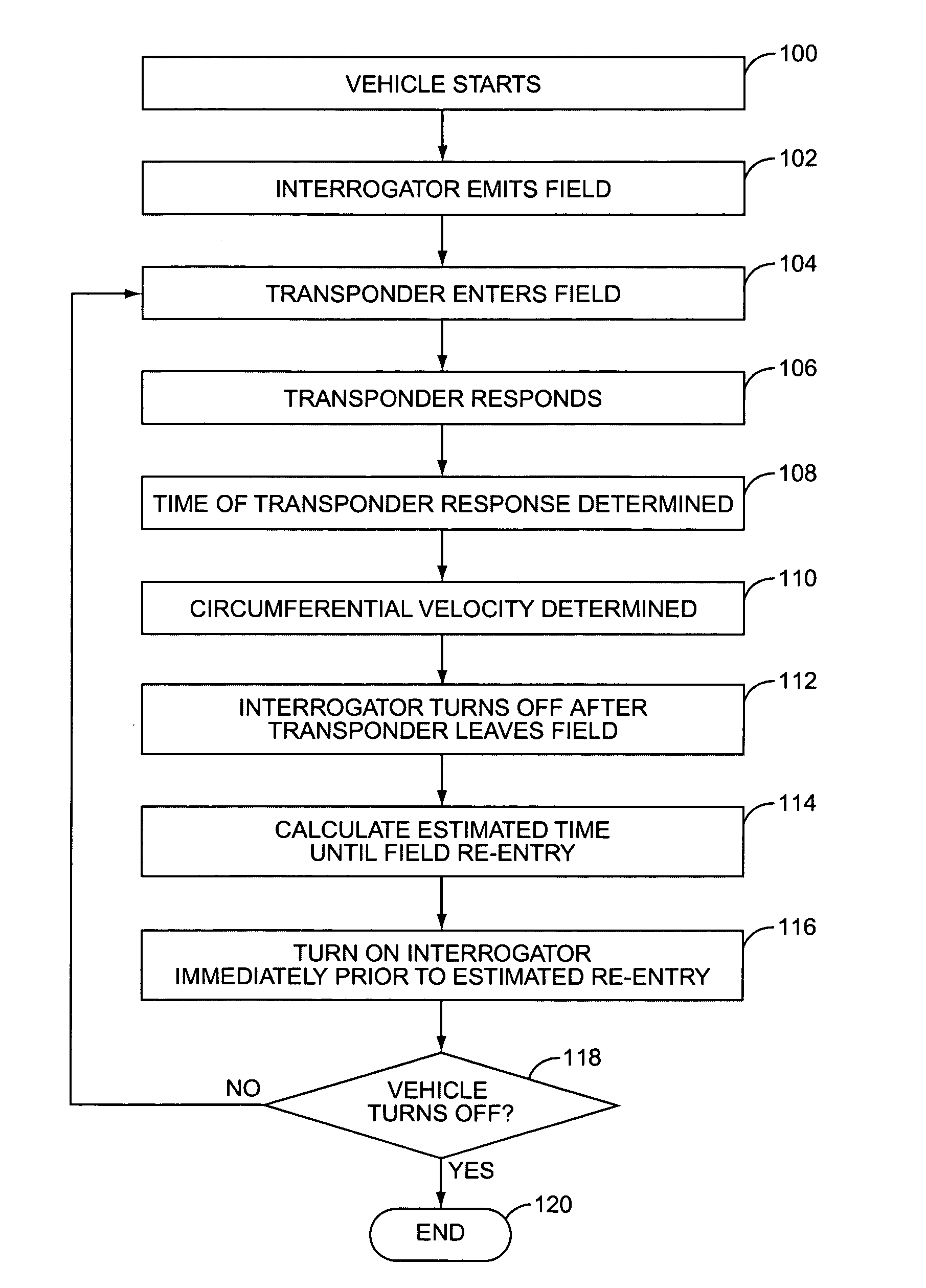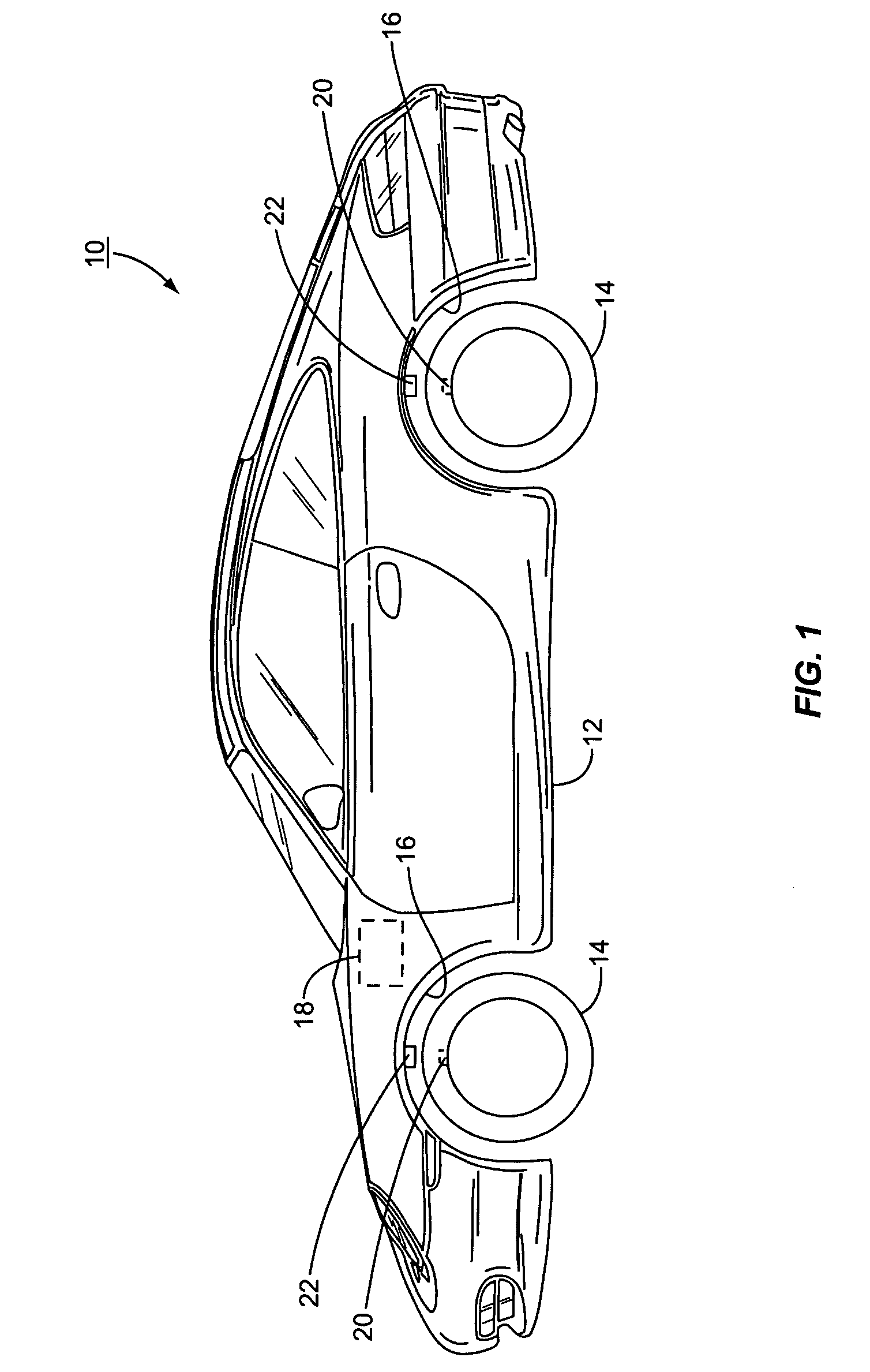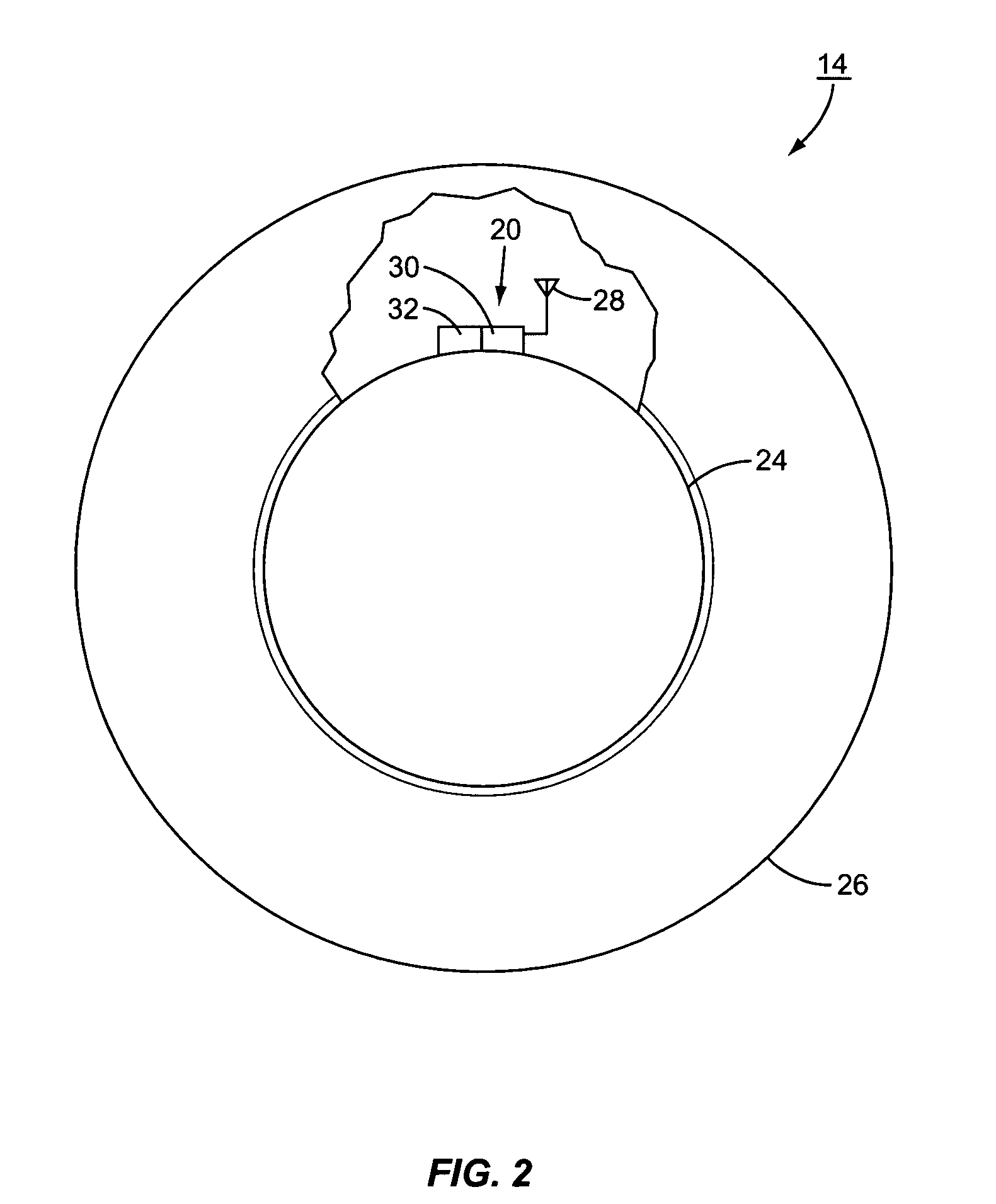Vehicle tag reader
a technology of vehicle tag and reader, which is applied in the direction of devices using time traversed, instruments, transportation and packaging, etc., can solve the problems of unpractical wire-based solutions to communication problems, unwanted performance variations, and shortage of teachings
- Summary
- Abstract
- Description
- Claims
- Application Information
AI Technical Summary
Benefits of technology
Problems solved by technology
Method used
Image
Examples
third embodiment
[0030]FIG. 3C illustrates a third embodiment, in which the baseband processor 38 and the demodulator 36 are integrated into the vehicle controller 18. Only the antenna 34 is positioned in the wheel well 16. Raw, undemodulated signals and power pass to and from the antenna 34 and the baseband processor 38 over the link 44.
[0031]Together, these three embodiments provide a variety of options for designers to use when incorporating interrogators into vehicles. As noted earlier, provision of more options provides more flexibility for the designers and improves the likelihood that an acceptable design may be located that meets the design criteria of the designer. Note that these three embodiments do not match the INTERMEC device, but with the teachings of the present invention the components of the INTERMEC device could be split into such an arrangement by one of ordinary skill in the art.
[0032]With this background of hardware, some of the other aspects of the present invention may now be...
first embodiment
[0035]Since the location and speed of the transponder 20 is known, the antenna need only communicate with the transponder 20 over a narrower arc of rotation of the wheel 14. Further, multiple antennas may be fired sequentially based on the known position and speed, thereby addressing any distortion concerns. Two such antenna structures 70 are illustrated in FIGS. 5 and 6. In FIG. 5, a plurality of transmit antennas 72 are used in conjunction with a single receive antenna 74. In the embodiment shown, five transmit antennas 72A–72E are illustrated, although it should be appreciated that fewer or more transmit antennas 72 may be used if needed or desired. The transmit antennas 72A–72E generate corresponding electromagnetic lobes 76A–76E. The lobes 76A–76E are narrow and extend sufficiently far to reach the expected location of the transponder 20. The transponder 20 responds with an electromagnetic signal that is received by the receive antenna 74. Because the reflected signal from the ...
second embodiment
[0036]A second embodiment, illustrated in FIG. 6, of antenna structure 70 arranges a plurality of dual function antennas 78A–78E about the wheel well 16. Each antenna 78 both transmits and receives an electromagnetic signal with a focused lobe 80. As the transponder 20 moves through the field of view of the antennas 78, the antennas may sequentially alter functions to achieve the maximum downlink, transmit, critical path, adequate uplink and receive. For example, initially the first antenna 78A may be in a transmit mode while second antenna 78B was in a receive mode. The remaining antennas 78C–78E may be disconnected. As the transponder 20 moves in front of the second antenna 78B, then the second antenna 78B is used to transmit, while first and third antennas 78A and 78C are used to receive. The remaining antennas 78D and 78E remain disconnected. The transponder 20 may then move into lobe 80C, effectively being in front of third antenna 78C, so third antenna 78C is used to transmit ...
PUM
 Login to View More
Login to View More Abstract
Description
Claims
Application Information
 Login to View More
Login to View More - R&D
- Intellectual Property
- Life Sciences
- Materials
- Tech Scout
- Unparalleled Data Quality
- Higher Quality Content
- 60% Fewer Hallucinations
Browse by: Latest US Patents, China's latest patents, Technical Efficacy Thesaurus, Application Domain, Technology Topic, Popular Technical Reports.
© 2025 PatSnap. All rights reserved.Legal|Privacy policy|Modern Slavery Act Transparency Statement|Sitemap|About US| Contact US: help@patsnap.com



